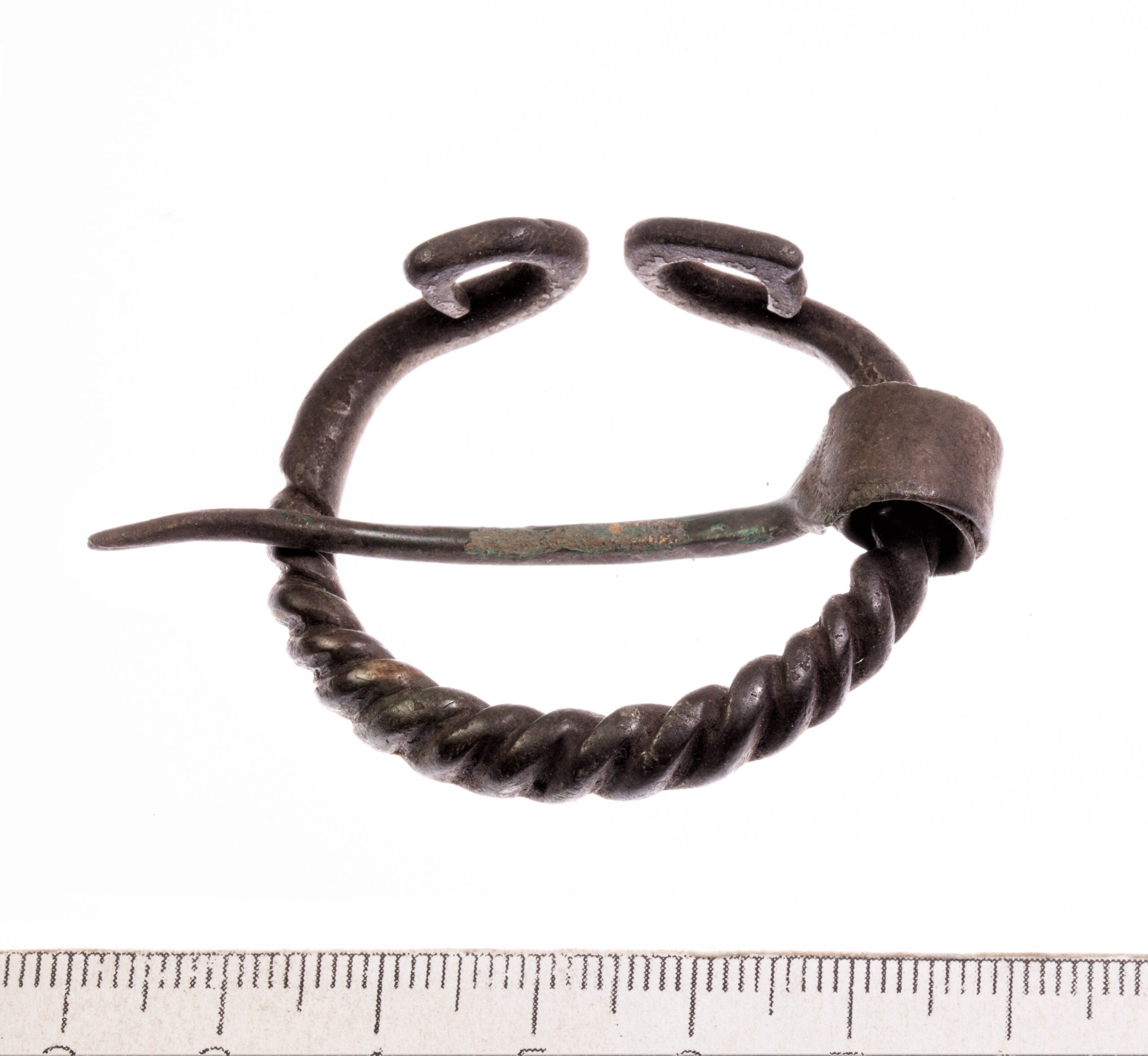Database
Our database is free to use for all history and archaeology enthusiasts. If you use our database, please do not forget to cite correctly:
Mägi, Marika; Palm, Piia Sandra. Archaeological Artefacts of Saaremaa. Foundation Osiliana / Tallinn University. Accessed: date.
The Osiliana Archaeological Database presents artefacts from Saaremaa and the surrounding small islands.
The database contains mainly Iron Age and Medieval finds that can be classified.
Undated metal or other pieces were generally excluded from the database.
Ceramics are represented by isolated examples.
The database is a work in progress and is constantly being updated.
Mullutu
Penannular brooch with widening knob-shaped terminals, copper alloy.
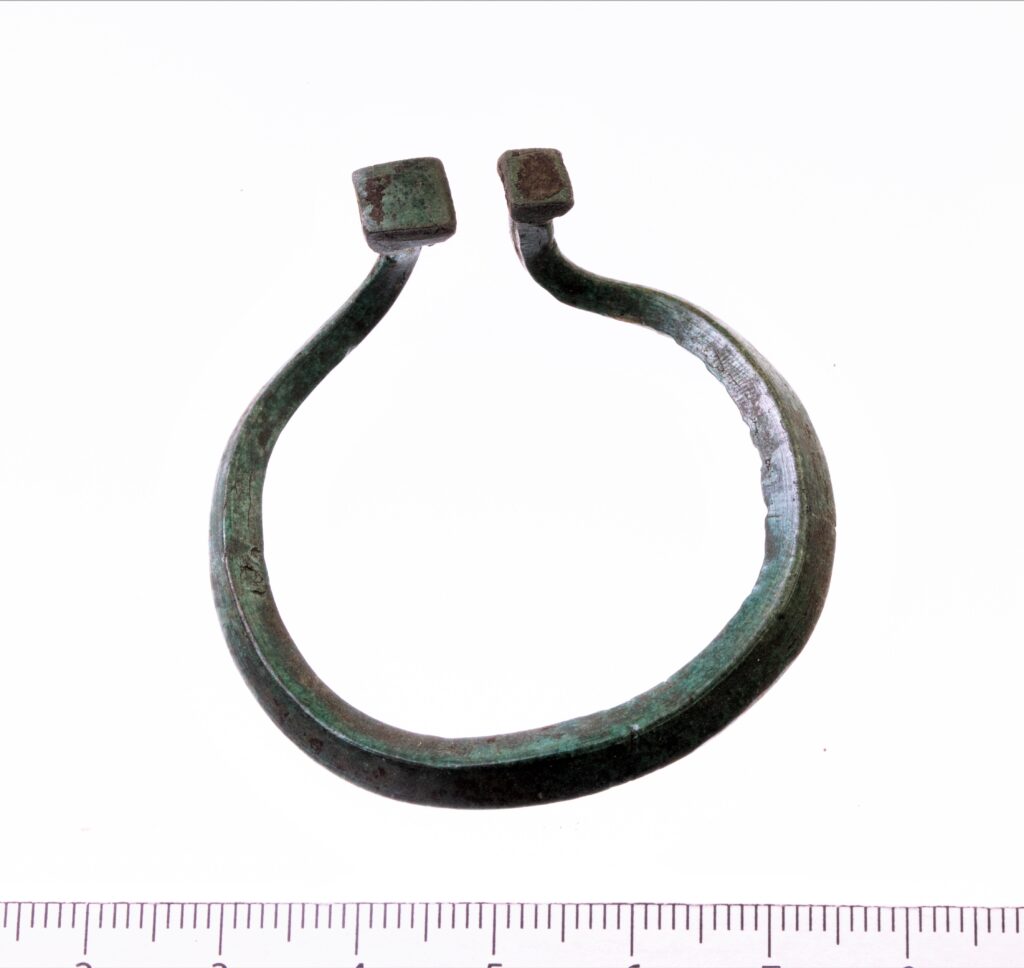
Photo: Jaana Ratas.
Penannular brooch with widening knob-shaped terminals, copper alloy. With a rhomb-shaped cross-section. Such brooches have been found in stone graves with cremations, where they can belong to the late 12th century. They are more widespread in inhumation graves or found as stray-finds. In Siksälä Cemetery, SE-Estonia, such brooches are dated, depending on the shape of the ring and pin, to the 13th-15th centuries (Valk & Laul 2014, 102-103).
Literature:
Valk, H. & Laul, S. 2014. Siksälä kalme I: Muistis ja Ajalugu. Tartu ülikool, Ajaloo ja arheoloogia instituut, Tallinn.
Mullutu
Finger-ring with double-spiral ends, bronze. It is predominantly local type Estonian ornament, but sometimes also recorded in neighboring areas.
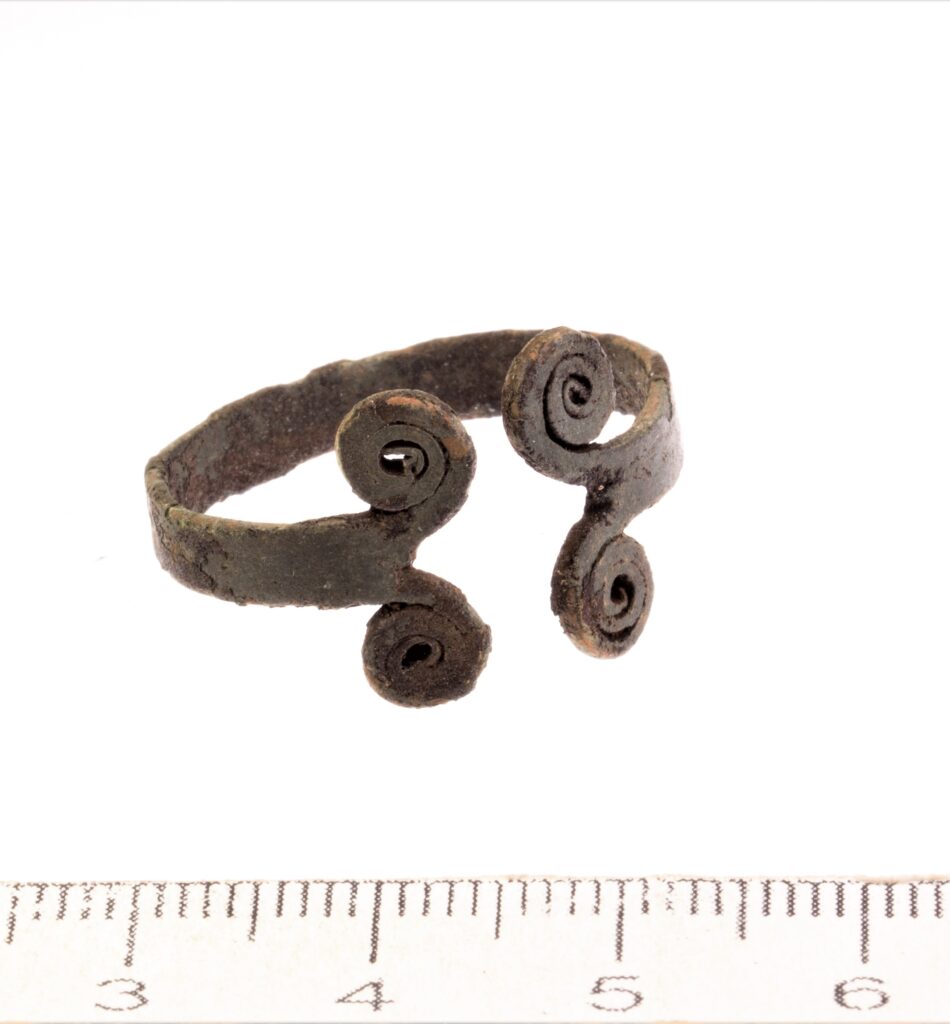
Photo: Jaana Ratas.
Finger-ring with double-spiral ends, bronze. It is predominantly local type Estonian ornament, but sometimes also recorded in neighboring areas.
Read more:
Mägi, M. 2002. At the Crossroads of Space and Time. Graves, Changing Society and Ideology on Saaremaa (Ösel), 9th–13th centuries AD. Tallinn: Ajaloo Instituut, Tallinn/Center of Baltic Studies, Gotland, p. 108. Read the book: here. Look at the drawings of the archaeological excavations: here.
Mullutu
Penannular brooch with faceted terminals, copper alloy. Pin missing, one end broken.
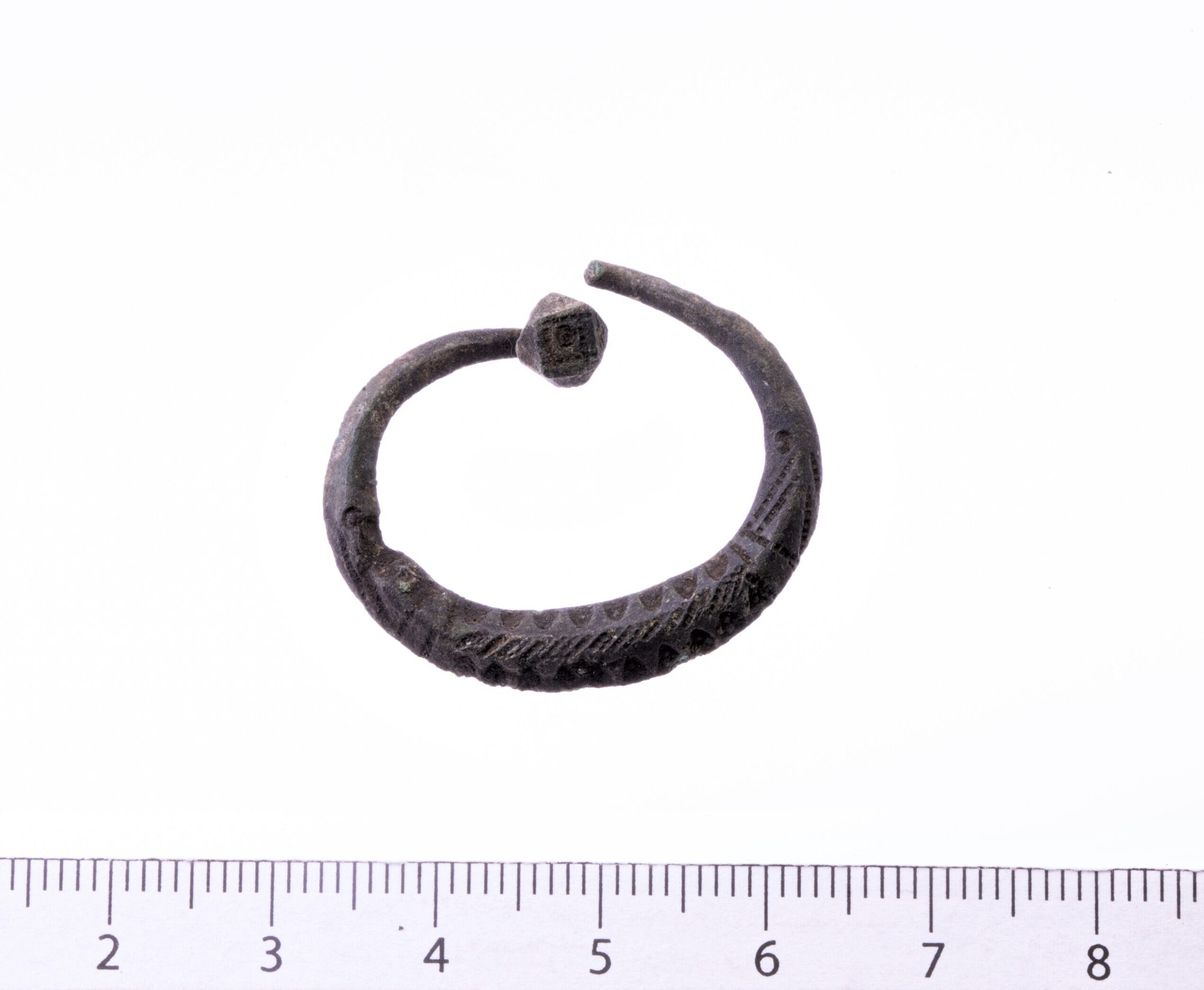
Photo: Jaana Ratas.
Penannular brooch with faceted terminals, copper alloy. Pin missing, one end broken. With a rhomb-shaped cross-section of the ring, the ring decorated with “wolf-teeth” ornament. Such brooches were widespread in Estonian stone graves (see e.g. Pauts 1997, 197; Mägi 2002; Mandel 2017), but also occurred in inhumation graves, and can be dated up to the the mid-13th century.
Pauts, H. 1997. Pahaga hoburaudsõled Eestis. (Töid ajaloo alalt, I.) Eesti Ajaloomuuseum, Tallinn, 79-115.
Mägi, M. 2002. At the Crossroads of Space and Time. Graves, Changing Society and Ideology on Saaremaa (Ösel), 9th–13th centuries AD. Tallinn: Ajaloo Instituut, Tallinn/Center of Baltic Studies, Gotland.
Mandel, M. 2017. Maidla muinaskalmistu saladused. Eesti Ajaloomuuseum, Tallinn.
Mullutu
Penannular brooch, bi-conical poppy-shaped terminals, copper alloy. Narrow-based pin.
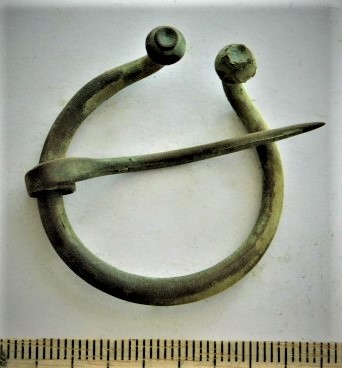


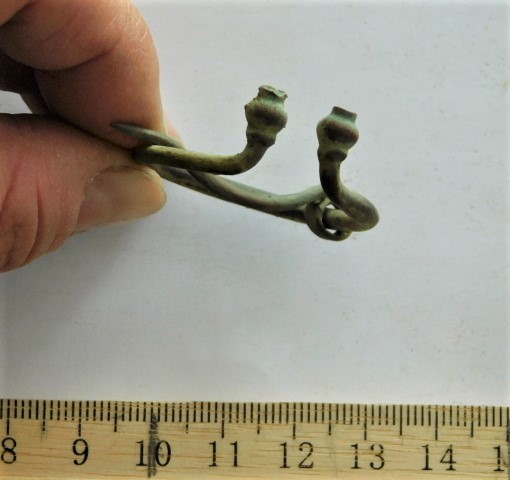
Penannular brooch, bi-conical poppy-shaped terminals, copper alloy. Narrow-based pin. Brooches with such terminals were widespread, in addition to Saaremaa, especially in Couronia, Livic areas and Gotland, where they are dated to the 10th-11th centuries (Mägi 2002, 100-101; Vaska 2019, 198).
Literature:
Mägi, M. 2002. At the Crossroads of Space and Time. Graves, Changing Society and Ideology on Saaremaa (Ösel), 9th–13th centuries AD. Tallinn: Ajaloo Instituut, Tallinn/Center of Baltic Studies, Gotland, p. 100-101. Read the book: here. Look at the drawings of the archaeological finds: here.
Vaska, B. 2019. Rotas un ornaments Latvijā no bronzas laikmeta līdz 13. gadsimtam. Latvijas Nacionālais vēstures muzejs. Rīga.
Mullutu
Bronze disc-shaped brooch with openwork ornament, copper alloy.
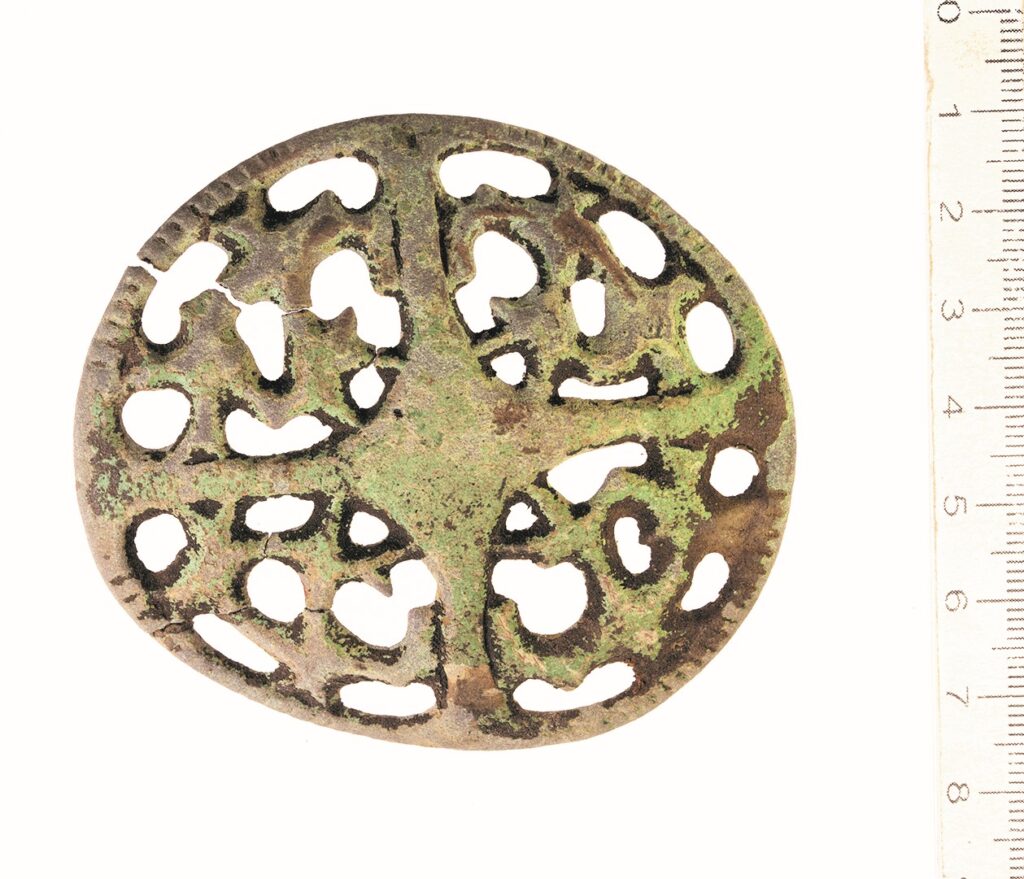
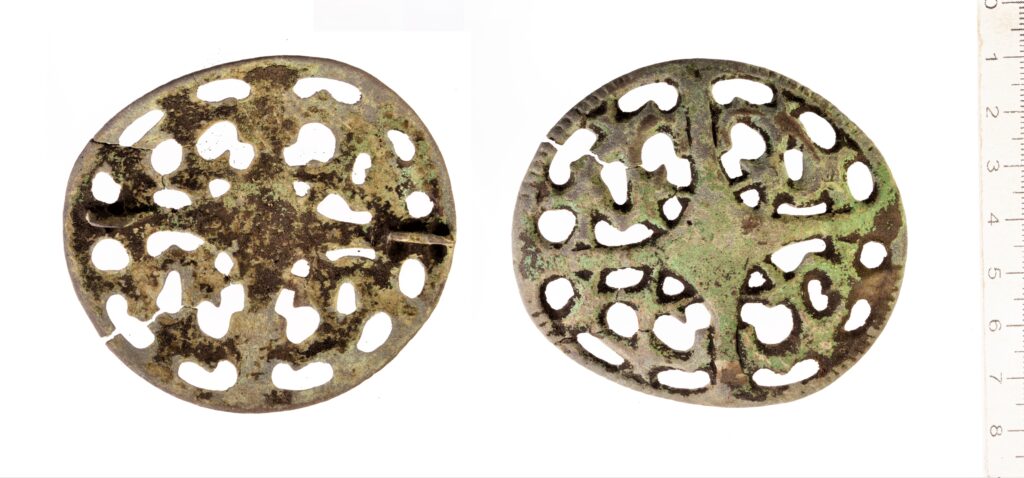
Photos: Jaana Ratas.
Disc-shaped brooch with openwork ornament, copper alloy. Such brooches were widespread mainly in Finland, but have been recently found more and more in Estonia as well..
Literature:
Kivikoski, E. 1973. Die Eisenzeit Finnlands. Bildwerk und Text. Neuausgabe. Helsinki, 92, Taf. 74.
Mullutu
Box-shaped brooch with openwork ornament in Nordic Animal style, copper alloy.

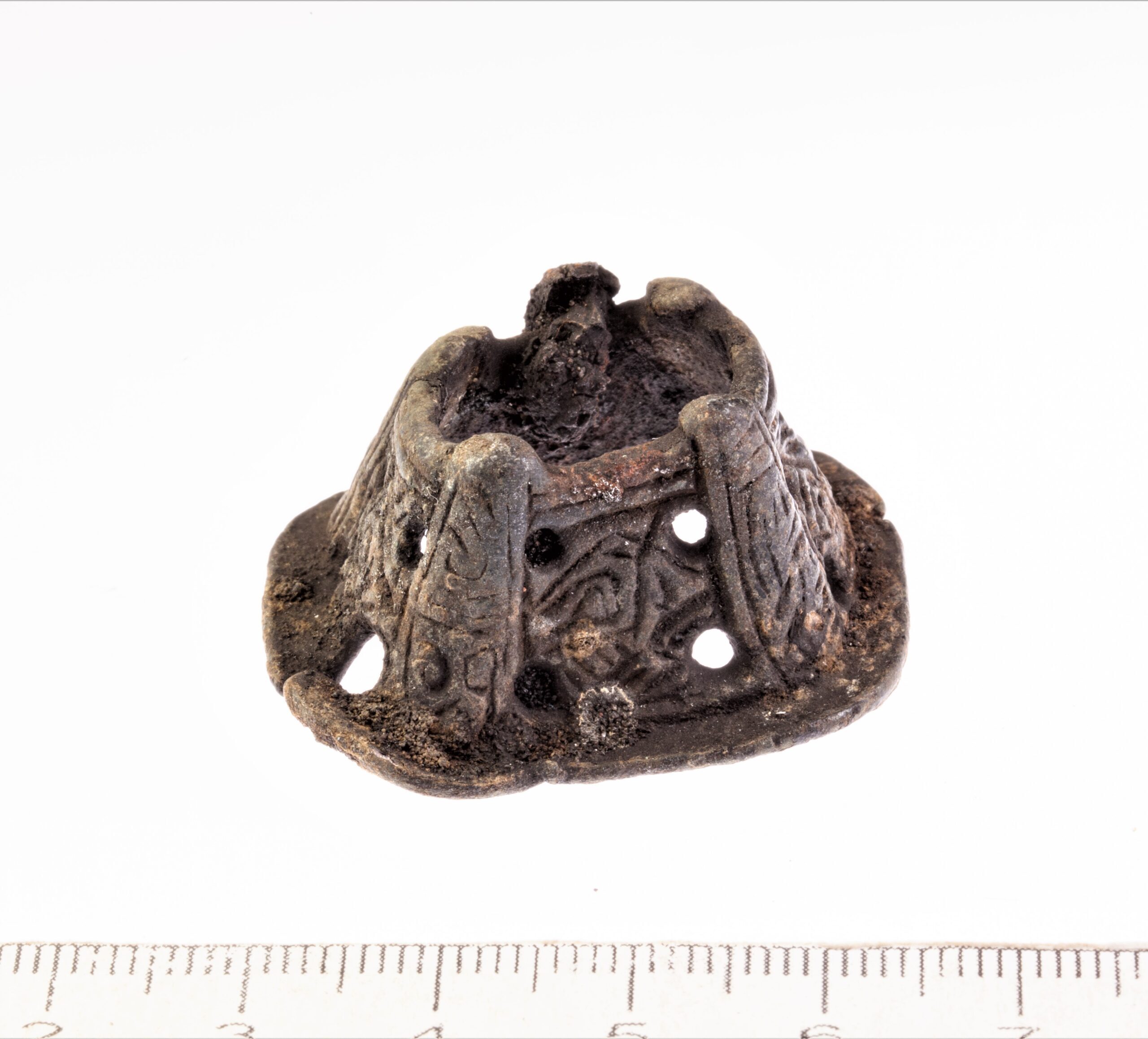
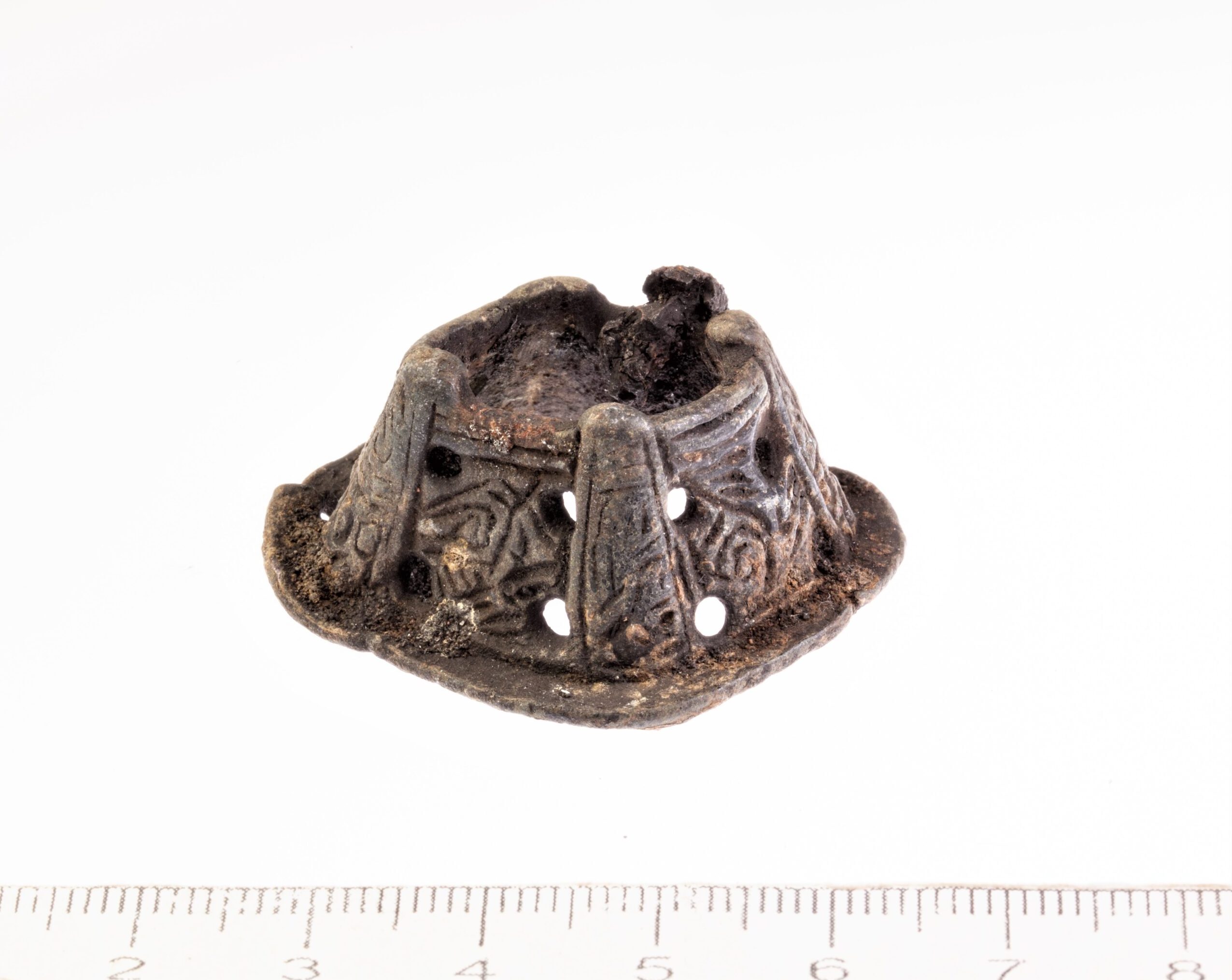
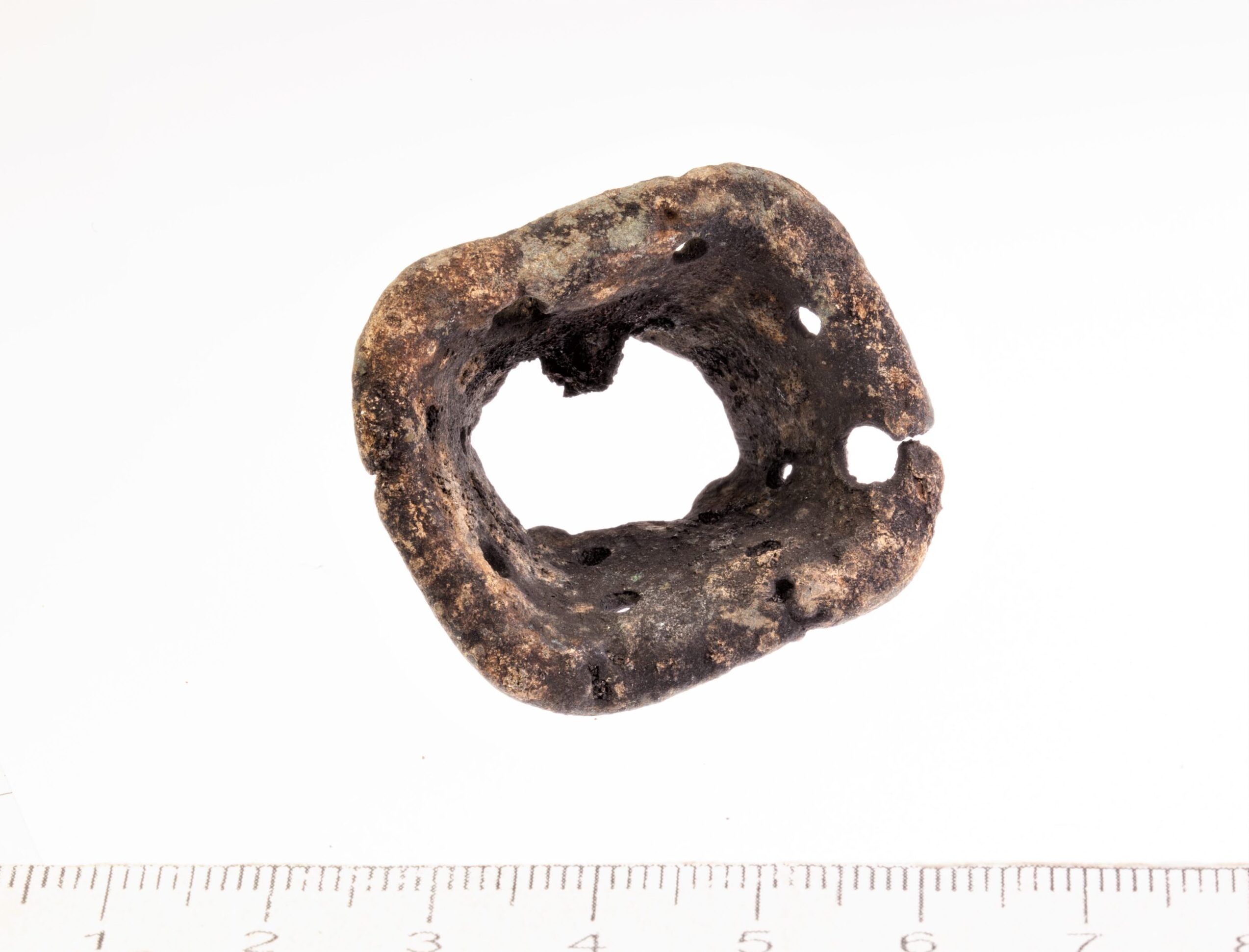
Photos: Jaana Ratas.
Box-shaped brooch with openwork ornament in Nordic Animal style, copper alloy. Two similar brooches have been found in Birka graves in Sweden (Arbman 1940, Taf 85: 6, 7; 1943, 117-118, 467-468). The second half of the 9th or the first half of the 10th century (Gustin 2017, 224, with reference to Johan Callmer).
Literature:
Arbman, H. 1940. Birka I. Die Gräber. Tafeln. Stockholm, Vitterhets Historie och Antikvitets Akademien.
Arbman, H. 1943. Birka I. Die Gräber. Text. Stockholm, Vitterhets Historie och Antikvitets Akademien, 117-118, 467-468.
Gustin, I. 2017. Contacts, Identity, and Hybridity: Object from South-western Finland in the Birka Graves. – Callmer, J.; Gustin, I. & Roslund, M. (eds.) Identury Formation and Diversity in the Early Medieval Baltic and beyond. Communicators and Communication. Leiden, Brill, 205-258.
Mullutu
Finger-ring with thickening middle part, bronze.

Photo: Jaana Ratas.
Finger-ring with thickening middle part, bronze.
Mullutu
Finger-ring with middle shield, bronze.
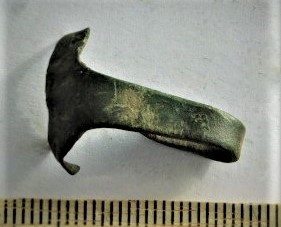
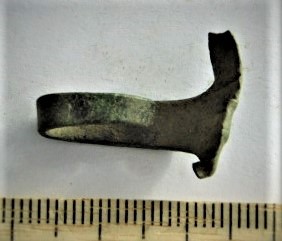
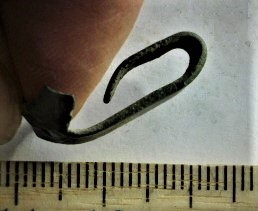
Finger-ring with middle shield, bronze.
Literature:
Valk, H.; Ratas, J. & Laul, S. 2014. Siksälä kalme, II. Matuste ja leidude kataloog. Tartu.
Mullutu
Penannular brooch, copper alloy. Tvisted ring and lily-shaped terminals.
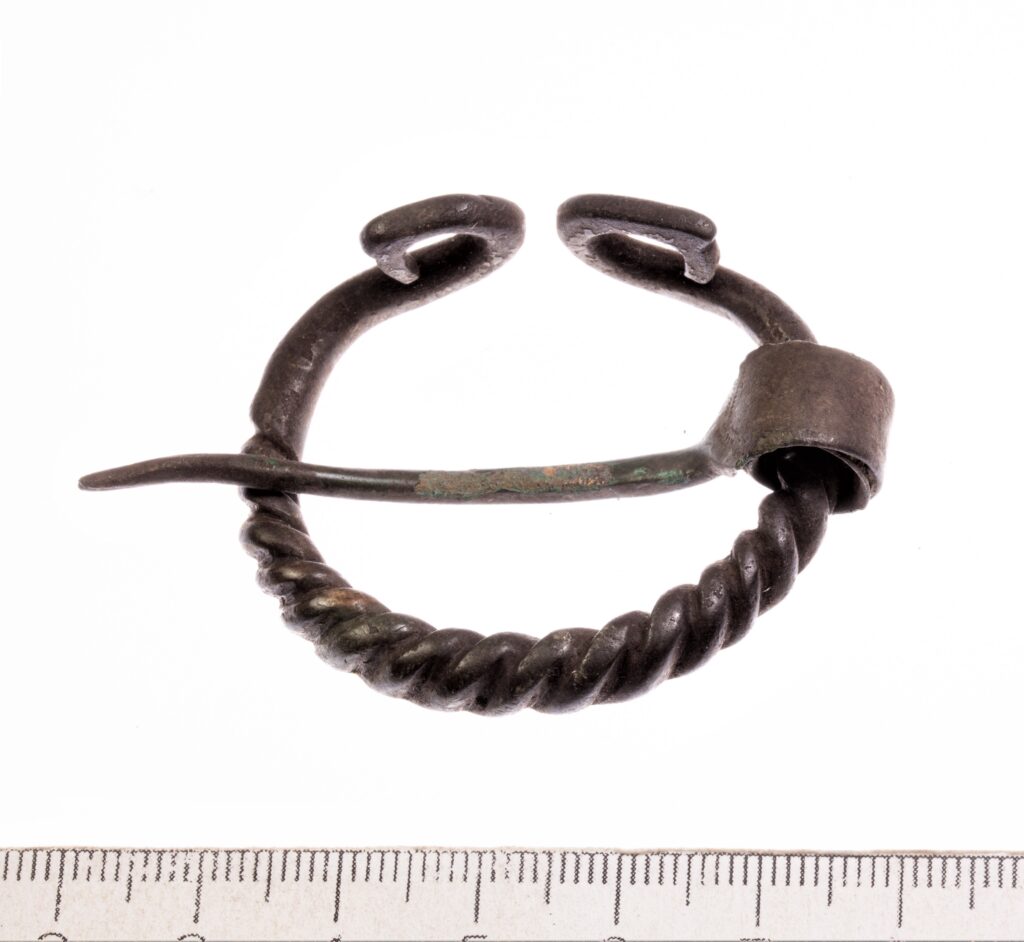
Photo: Jaana Ratas.
Penannular brooch, copper alloy. Tvisted ring and lily-shaped terminals. Somewhat similar brooch was found in buril No 1 at Valjala churchyard in 1971 (Mägi et al 2019). Based on the shape of the ring, as well as similar brooches in inhumation graves in Couronia and in St Peter’s churchyard in Riga, the brooch can be dated to the 13th-14th century, although similar types were used until the third quarter of the 15th century (Vaska 2017, 62-64).
Literature:
Vaska, B. 2017. Rotas un ornaments Latvijā no 13.gs. līdz 18.gs. vidum. Latvijas Nacionālais vēstures muzejs. Rīga.
Mägi, M.; Malve, M. & Toome, T. 2019. Early Christian burials at Valjala churchyard, Saaremaa. – Archaeological Fieldwork in Estonia 2018, 93−118, 94. Loe artiklit: siin.
The negative value refers to time Before Christ.




